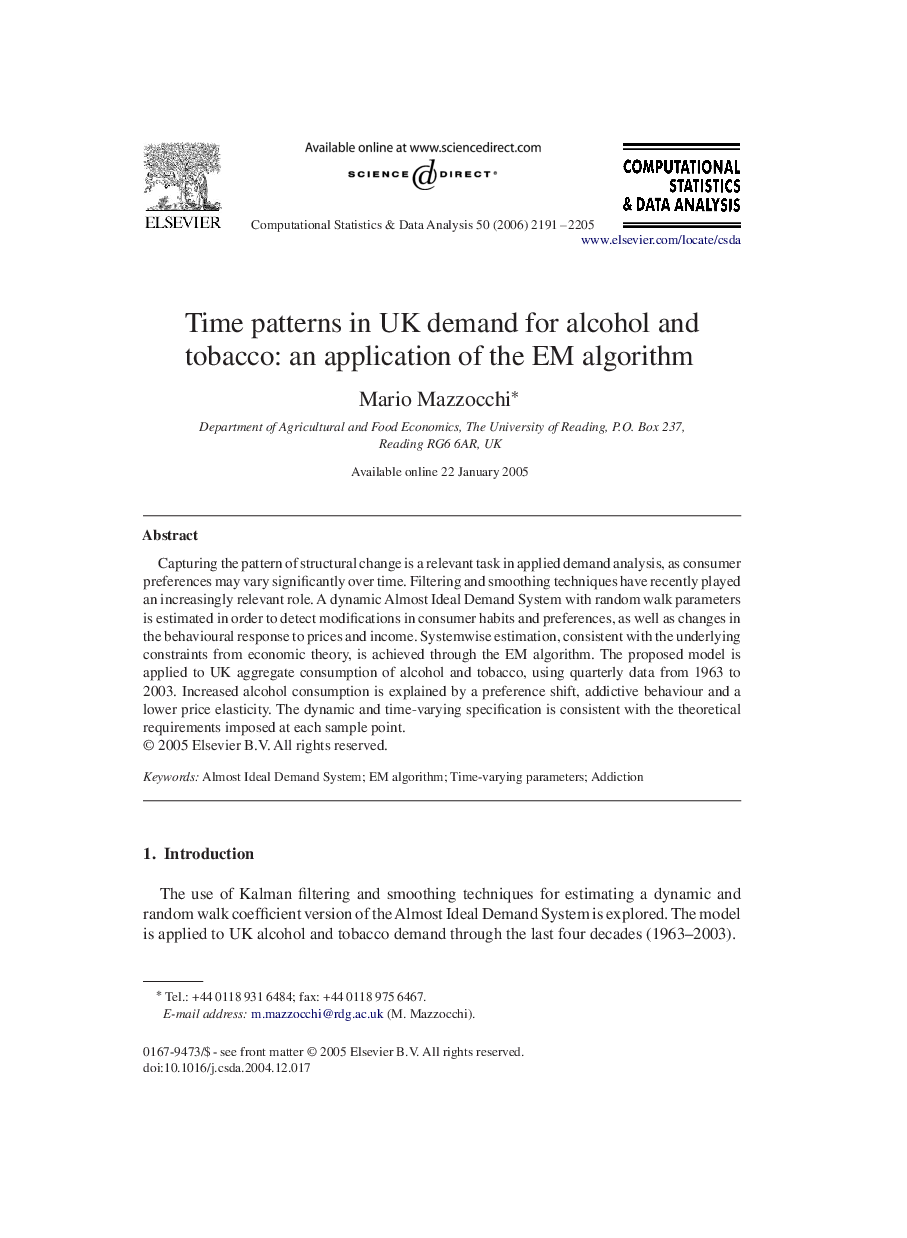| Article ID | Journal | Published Year | Pages | File Type |
|---|---|---|---|---|
| 415743 | Computational Statistics & Data Analysis | 2006 | 15 Pages |
Abstract
Capturing the pattern of structural change is a relevant task in applied demand analysis, as consumer preferences may vary significantly over time. Filtering and smoothing techniques have recently played an increasingly relevant role. A dynamic Almost Ideal Demand System with random walk parameters is estimated in order to detect modifications in consumer habits and preferences, as well as changes in the behavioural response to prices and income. Systemwise estimation, consistent with the underlying constraints from economic theory, is achieved through the EM algorithm. The proposed model is applied to UK aggregate consumption of alcohol and tobacco, using quarterly data from 1963 to 2003. Increased alcohol consumption is explained by a preference shift, addictive behaviour and a lower price elasticity. The dynamic and time-varying specification is consistent with the theoretical requirements imposed at each sample point.
Related Topics
Physical Sciences and Engineering
Computer Science
Computational Theory and Mathematics
Authors
Mario Mazzocchi,
